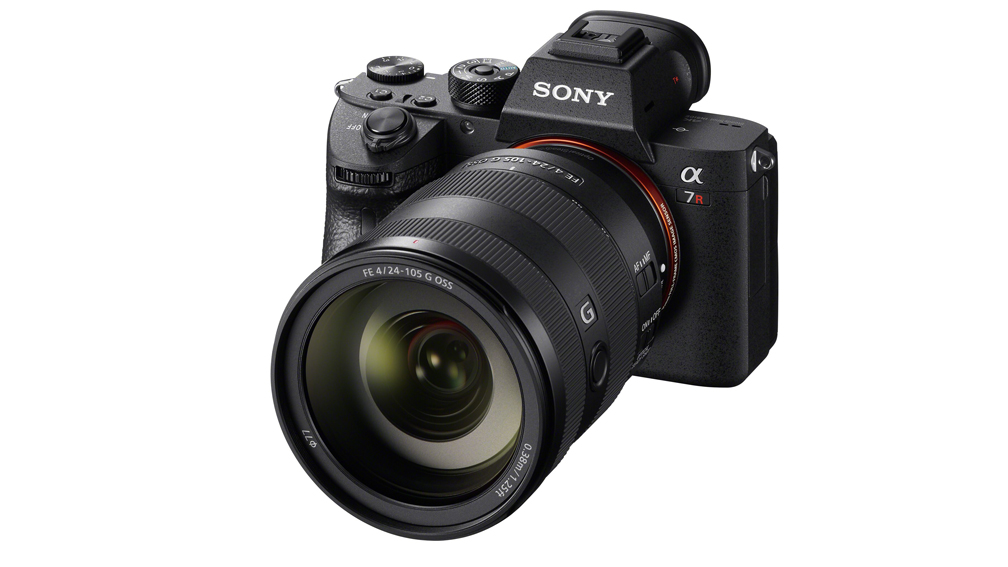Versatile, Mirrorless, 61-megapixel Camera
Review by Steve Baczewski
The shiny object in Sony’s new mirrorless A7R IV camera is their new BSI 61-megapixel sensor. For now, if you’re looking for more pixels, the next stop is medium-format. Landscape photographers will find the image detail and ease of cropping in post hard
to resist.
But this isn’t a one-trick pony. Sony has made other changes, including physical improvements to the body that add to the overall performance, making it an all-around professional camera for sports, architecture, modeling, and the studio. For example, the textured grip is deeper and, in conjunction with the A7R IV’s built-in, 5-axis image stabilization, enables hand-holding long lenses more practical and less reliant on tripods. Handheld, the A7R IV provides for a wonderful, fluid shooting experience. The buttons on the A7R IV’s body are larger and more tactile than previous versions, and the exposure compensation dial now has an optional lock to avoid unintended changes. The rear control dial is repositioned on top of the body for easier access and, when adjusting the aperture or shutter speeds (both the front and rear control dials), there’s a sense of precision, with a more distinct click between stops. In addition, the weather seals and gaskets are more prevalent and evident around compartment doors.

Sony has also added more and faster-reacting phase-detection points to the sensor: from 399 points on the A7R III to 567 points on the A7R IV, and they’ve increased the area covered from approximately 45%–75% of the sensor. The results are that AF, whether shooting single or continuous, is faster and more accurate. Sony has added animals to their face- and eye-recognition feature, and tracking people and pets worked very well, even in difficult situations, such as strong back light, erratic subject movement, and in low-contrast settings.
The powerful CAF feature, combined with shooting 10 fps in compressed RAW or JPEG opens the A7R IV for sports, portraiture, and wildlife. (Photographing uncompressed RAW averages 6 fps.) Composing with the EVF is excellent, as the EVF display has been upgraded from 3.69 million dots on the A7R III to 5.76 million-dot resolution on the A7R IV, making composing more precise, especially with manual focus. Coverage is 100% with a 0.78 magnification. The EVF refreshes at either 60 or 120 fps. Capturing action at 120 fps is smooth, without blackouts, and suddenly a mirrorless camera is a viable option for sports photographers.
There has been no upgrade to the articulating LCD, and sadly Sony’s implementation of touchscreen technology remains way behind other manufacturers; it’s limited to moving the focus point and enlarging and navigating images in playback. That’s all!
Their main menu is 41 pages, lacks logic, uses nondescript names, and leaves users to hunt for features. This can be remedied, however, by assigning features to the camera’s numerous customizable buttons, or to the quick-access function menu. Both of the A7R IV’s SD memory-card slots can now take advantage of the faster UHS II cards.
The composite pixel-shift feature has been upgraded, so now it can capture either 4 or 16 images. It essentially cancels out the Bayer pattern, and nudges the image by 1 pixel or 0.5 pixels, depending on whether you choose 4 or 16 images, respectfully. You end up with a 240-megapixel file, with the detail visibly better than a single 61-megapixel file. The camera’s detail files are ideal for architectural photographers; but, for this feature to work, your camera needs to be on a tripod, the subject cannot move, and you have to wait to preview the images in post with Sony’s Image Edge software. (Other camera manufacturers that feature pixel-shift technology process the file in-camera and let you preview the image comparatively quickly to help you decide your next move.)
Image quality from the A7R IV’s 61-megapixel sensor is excellent; however, at ISOs above 3200, luminance noise is a factor. Files are filled with highlight and shadow detail, capturing a wide dynamic range, and the color is stunning. Having 61 megapixels makes beautiful large prints, even when the files are cropped. The Sony A7R IV, with its detailed files, fast and accurate AF, and improved burst speeds makes it a versatile choice for landscapes, portraitures, sports, and architecture. ■







This camera deserves a much higher rating than 80.
There are many reviews on this camera non rate it this low.
I think K1 is Canoncentric.
The A7RIV review accurately details the strengths and weaknesses of this camera body . Nonetheless, I was very surprised at the relatively low overall score given to it. It seems to me lessor cameras have received higher scores. For example, the Nikon Z7 scored 98?!? I’m hard pressed to understand the choice of the Z7 (98) over the A7RIV (80).
I’m a bit confused. 80% How did you come up with that number? I don’t find the menu confusing at all, in fact, the use of the Fcn menu and the favorite/custom menu makes it a breeze to use the camera! I agree that noise can be an issue at higher ISOs, but that is expected with that many megapixels and easily handled in post. No touch screen?? That gave it 80% score? Sure, I like articulating and touch screens, but I’m the focus system and image quality are worth much more than that. Help me understand why you gave this amazing camera an 80%!